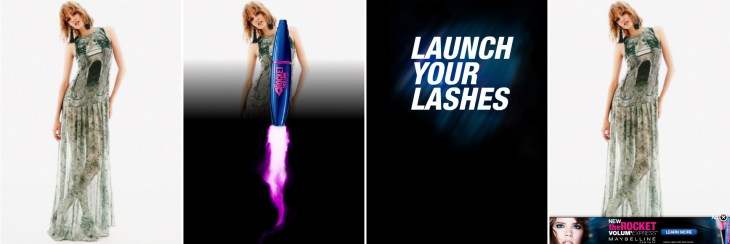In-image advertising company GumGum has launched a bigger, more attention-grabbing ad unit — one that it says is the industry’s first in-image takeover.
The company is calling the new unit the Canvas, and it’s launching the first ads with digital agency Moxie as part of a campaign promoting The Rocket Mascara from L’Oreal’s Maybelline unit. When an image first loads up with the ad, the mascara actually flies across the picture, then there’s a quick ad that takes over the entire image space, and it finally settles into a more standard GumGum banner at the bottom. You can see a sample ad here.
I’m guessing non-Rocket ads aren’t going to copy that specific animation, but you can imagine other ads following a similar format, taking over the image for a few seconds and then shrinking into a normal banner. And yes, GumGum founder and CEO Ophir Tanz said this “works really nicely on mobile,” too.
Tanz added that GumGum can launch a unit that’s more aggressive than the company’s previous banners, because publishers are becoming more comfortable with in-image advertising and trust GumGum not to anger their readers.
“At the end of the day, it’s an ad, so users aren’t really going to love it,” he acknowledged, but he argued that it strikes a nice balance, because users have the option to hit the X button and close the ad at any time. Plus, the ad should hopefully show up in a context where it’s relevant, and it’s frequency capped, so it shouldn’t get shown too often to any individual visitor.
Tanz argued that in-image advertising is both more lucrative and more reader-friendly than the banner ads that clutter up most websites. In fact, his ultimate goal is to convince publishers to monetize entirely through these types of ads, and he said some GumGum publishers are already moving in that direction. The Canvas ad can help with that, because the CPMs (price paid by advertisers per thousand impressions) are a few dollars higher than GumGum’s standard rates.
